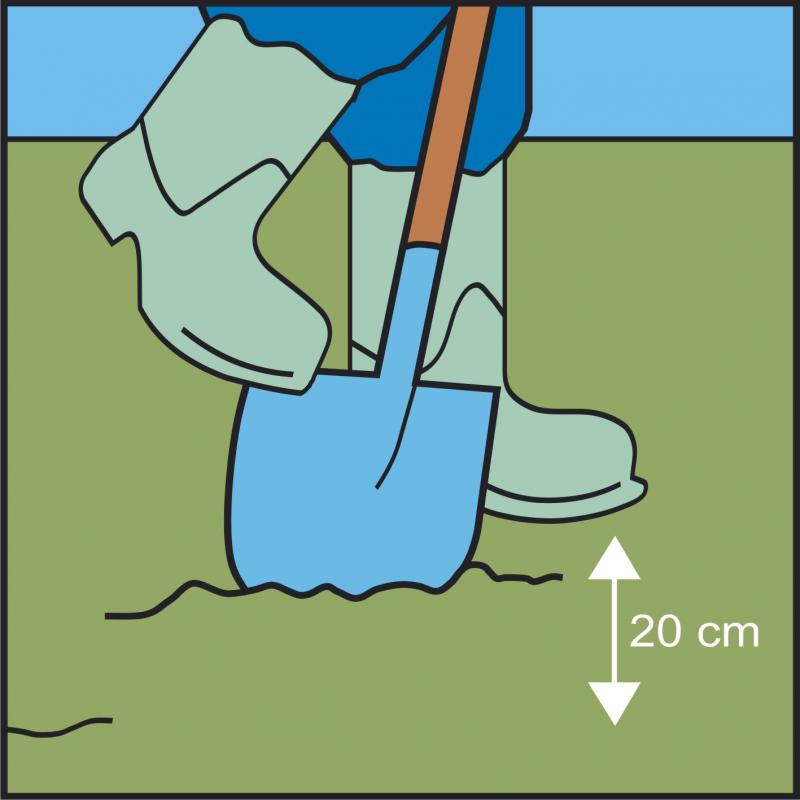

Correct preparation of the top soil is essential for correct grass growth. Despite it being a drawn out and laborious activity, by no means should it be overlooked, as grass growth and the final appearance of the lawn depends on how we prepare the soil.
Soil should be thoroughly turned across the entire area where the lawn will be established, to a depth of 15-20 cm using a spade or power tiller. On light, sandy soils, spread out a 10 – 15 cm layer of clay earth or fertile compost earth and turn. Earth from a farming field could also be used mixing its 5-10 cm layer with a 3-5 cm layer of peat. Compact soils require “loosening” by adding sand (6-7 m3 per 100 sq. m.).

If the soil is slow permeable, which causes puddles to stand for a few days, drainage is required. This is also essential on clay soils. On flat areas we can establish a seepage layer under the entire lawn. Collect the top lawn layer, dig 30 cm wide gaps every 2 cm down to the impermeable layer ever, fill with sand, establish an approx. 10 cm coarse sand seepage layer and then lay out the top soil. A recommendable, yet difficult to establish is the application of a system of drainage tubes. Such a system, if opted for, is best done by a professional company.
Prior to establishing a lawn, all weeds should be meticulously removed. This can be done by hand or using appropriate herbicides – weedkillers – e.g. Roundup, keeping in mind the fact that this substance only works on plants, and as such spraying the surface with it is pointless. Once weeds are removed, turn the soil using a spade to a depth of 20-25 cm. Repeat two or three times, remove remaining weed roots, stones rubble etc. Pre-sowing application of fertiliser. Fertiliser or peat substrate should be added to soils with a shortage of nutrients (then turn again). Apply 1/3 of the annual dose – fertiliser should be mixed into the soils to a depth of 15 cm. The fertiliser should be applied at least 7 days prior to sowing.
Then the soil surface should be thoroughly raked so that earth clumps are broken up. The turned earth should be left to stand for at least one week, for it to settle naturally then level and water generously. Once surface is levelled, compact the soil using a light roller. Rolling is best done in two perpendicular directions (in a crosswise fashion). Then water the soil generously. The last stage prior to sowing is levelling the surface with a rake, disturbing the soil to a depth of no more than 5 cm.

The soil should be slightly acidic with pH between 5.5 and 6.5. If pH is below 5.5 the soil should be, the soil should be treated with lime to deacidify it, whereas soils with pH between 7.0 and 8.0 should be acidified with ammonium sulphate.



